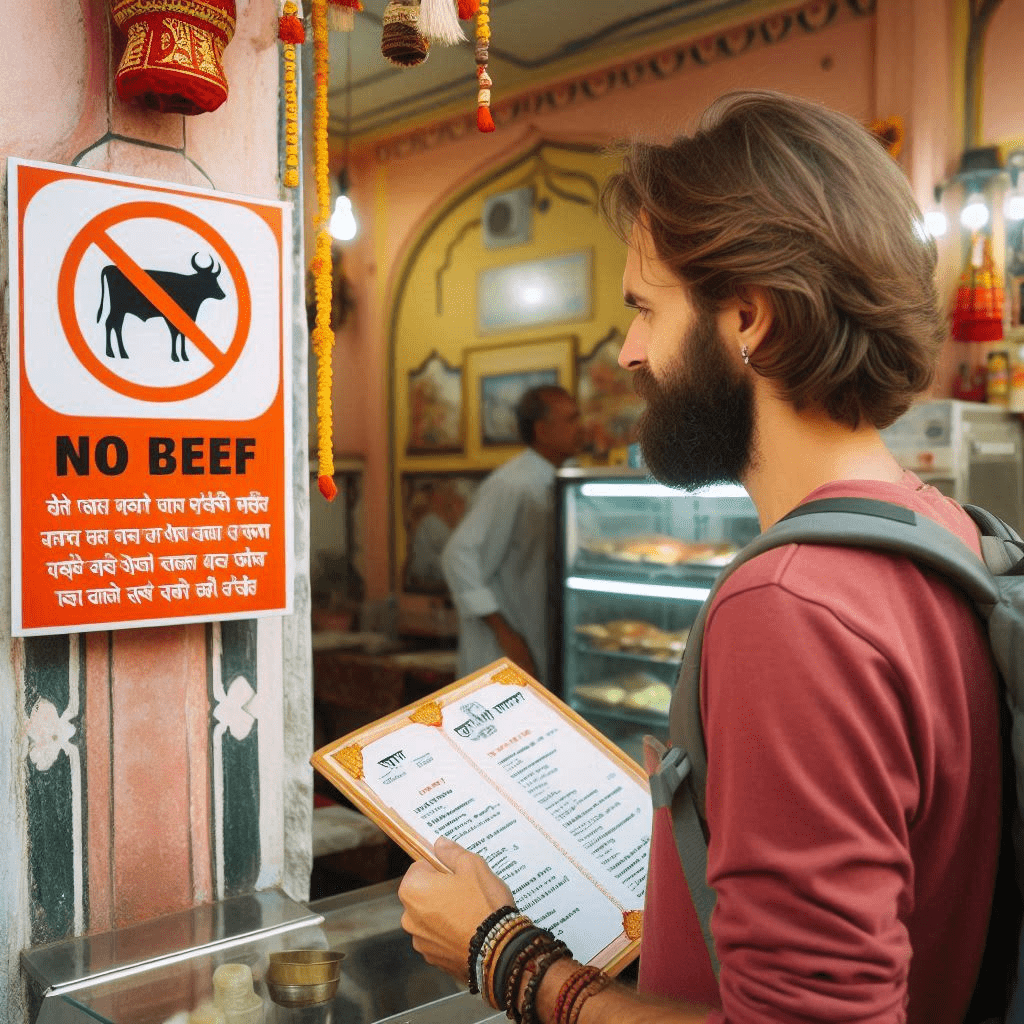India’s food scene is a vibrant mix of flavors, colors, and aromas, but navigating it as a traveler requires some know-how, especially when it comes to beef and pork. Here’s a concise, practical guide to help you eat confidently, respectfully, and deliciously while exploring India.
Why Beef and Pork Are Rare in India
India’s food culture is deeply tied to its religious and cultural traditions, which influence what’s on the menu:
- Hinduism and the Sacred Cow: Hinduism, practiced by about 80% of Indians, considers cows sacred. Eating or harming cows is a no-go, so beef is largely off the table.
- Islam and Pork: Islam, followed by around 14% of the population, prohibits pork consumption. As a result, pork is avoided by Muslim communities.
- Vegetarianism: Many Hindus and Jains follow vegetarianism, rooted in the principle of non-violence (ahimsa). Even non-vegetarians often skip beef and pork due to cultural norms.
Where Can You Find Beef or Pork?
- Beef: Don’t expect to see beef on most menus. It’s rare across India but may be available in:
- Northeastern states (like Nagaland or Meghalaya), where tribal communities have different dietary traditions.
- Goa, Kerala, or parts of South India, where Christian or non-Hindu populations may consume it.
- Note: When “beef” is served, it’s usually buffalo meat, not cow, due to the cow’s sacred status. Buffalo meat is tougher, gamier, and often used in specific regional dishes.
- Tip: Always ask before ordering, as beef can be a sensitive topic, especially in smaller towns.
- Pork: Pork is even less common. It’s consumed in small pockets, like:
- Northeastern states (e.g., Assam or Arunachal Pradesh), where dishes like pork curry are local favorites.
- Parts of Karnataka or Goa, where Christian communities might include pork in their cuisine.
- Tip: Pork is taboo for most Hindus and Muslims, so it’s not widely available. Don’t be surprised if it’s absent from menus.
Alternatives to Explore
India’s cuisine is a treasure trove of flavors, and you won’t miss beef or pork with so many options:
- Vegetarian Delights: Try creamy dal makhani (lentils), spicy paneer tikka (grilled cheese), or aloo gobi (potato-cauliflower curry). Vegetarian food is a cornerstone of Indian dining, with endless variety.
- Non-Vegetarian Favorites: Savor butter chicken, lamb roganjosh, fish curry, or chicken biryani. Kebabs, tandoori dishes, and seafood are also widely available.
- Street Food: From pani puri (crispy bites with tangy water) to vada pav (spicy potato sliders), India’s street food is legendary. Stick to busy vendors with fresh food to avoid tummy troubles.
ITT Pro Tips
- Respect Local Customs: Avoid asking for beef or pork, especially in rural areas or traditional restaurants. It can be seen as insensitive.
- Check the Menu: Many restaurants label themselves “vegetarian” or “non-vegetarian.” If unsure, ask the staff for recommendations.
- Ask About “Beef”: If you see “beef” on a menu, confirm whether it’s buffalo meat. This distinction matters culturally.
- Embrace Regional Variety: India’s food varies by region. In Kerala, you might find buffalo fry, while Rajasthan excels in vegetarian dal baati. Ask locals for must-try dishes.
- Street Food Caution: Love street food? Choose vendors with long lines and fresh ingredients. Carry hand sanitizer and avoid raw items like salads.
- Try New Flavors: Don’t stick to what you know—dive into dishes like hyderabadi biryani or masala dosa. India’s cuisine is a global standout for a reason.
Categories :


